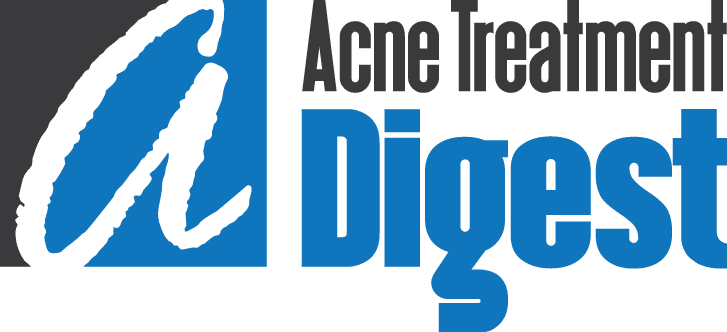Acne may have several causes but when it comes to acne treatment we can summarize them into at least 3 categories (antibacterial acne medication, pore unblockers, oil reducing acne medication). Most acne treatment medications are using what we know as “monotherapy” acne treatment. Monotherapy is an acne treatment procedure utilizing only one anti-acne treatment product. This single anti-acne treatment product may function as an antibacterial agent, keratolytic agent, or both.
The best acne treatment product or acne medication should be able to kill acne-causing bacteria, prevent the formation of comedo or pore blockage, and reduce the sebum output of the oil glands.
The best acne product should also be able to reduce skin irritation, accelerate skin repair, and moisturize the skin. Since there is no single anti-acne treatment product or procedure that can address all the major causes of acne, the only option that dermatologists have is to combine them synergistically.
This acne treatment method is known as a multi-therapy acne treatment. Multi-therapy acne treatment is better than monotherapy acne treatment because it utilizes the synergistic effect of several anti-acne medications or natural anti-acne products. Multi-therapy acne treatment also includes bioactive ingredients that are designed to accelerate skin repair, moisturize the skin, and reduce skin irritation.
1. Acne Treatment using Antibacterials
Antibacterials can be taken orally or applied topically. Topically applied antibacterials used in acne treatment have the least amount of side effects and is generally safer to use. Oral antibiotics are reserved for moderate to severe acne because of its side effects to the internal organs and the issue of “bacterial resistance”.
A common example of Antibacterials used as acne medication:
Benzoyl Peroxide (Topical)
Azelaic Acid (Topical)
Topical and Oral Antibiotics
2. Acne Treatment using Keratolytic/Comedolytic agents
These are acne medications that open up blocked pores and prevent them from being clogged; This type of acne treatment is designed to open up the pores by encouraging the skin to peel. Peeling removes trapped sebum and dead skin cells inside the pores. In acne-prone skin, there is an excess production of keratin that causes the pores to become blocked with dead skin cells and trapped sebum. Trapped sebum encourages the growth of acne-causing bacteria because sebum is their main source of nourishment. It is therefore necessary for an effective acne treatment strategy to always keep the pores free from blockage.
Examples of Keratolytic/Comedolytic acne medication used in acne treatment:
Alpha-Hydroxy Acid Family (Glycolic Acid, Lactic Acid)
Beta-Hydroxy Acid Family (Salicylic Acid)
Retinoids (Retinoic Acid, Adapalene, Retinol Palmitate)
Sulfur
3. Acne Treatment using Anti-Androgens
Oral anti-androgens are effective in suppressing the male hormone, which causes the oil gland to produce more oil. The problem with oral anti-androgen acne treatment is that it can only be used by females. It cannot be used by males to just treat acne because it can cause the reversal of male secondary sex characteristics. Anti-androgens are used only by males under medical supervision and in certain conditions such as in treating hypersexuality, prostate enlargement, and male pattern baldness. Currently, there are no topical anti-androgens that are as effective as oral anti-androgens.
Examples of Anti-Androgen acne medication used in acne treatment:
Spironolactone (Aldactone, Spiritone)
Cyproterone acetate (Androcur, Climen, Diane 35, Ginette 35)
Flutamide (Eulexin), nilutamide (Anandron, Nilandron)
Finasteride (Proscar, Propecia)
4. Acne Treatment using Sebosuppresive agents
These are acne medications that reduce the production of sebum in the oil glands. The most effective sebosuppresive agent is oral isotretinoin. Oral isotretinoin makes the size of the small glands smaller thus they produce less oil. However, oral isotretinoin is reported to produce very nasty side effects including liver damage, depression, tendonitis, and blood sugar problems. Since oral isotretinoin is a bit dangerous, it is only prescribed as a last line treatment for severe acne.
Example of oral sebosuppresive acne medication used in acne treatment:
Oral Isotretinoin (Accutane)
Some topical sebosuppresive agents are safer compared to oral sebusuppresive agents but they are very modest in reducing the amount of facial oil. Zinc Oxide and Copper Peptide seem to block 5-Alpha Reductase. 5-Alpha Reductase is an enzyme responsible for converting testosterone to dihydrotestosterone, the hormone responsible for triggering the oil glands to produce more oil. Isolutrol is an extract from the bile of sharks and is also aimed at reducing the oil secretion of the oil glands. However, the results of the studies using Isolutrol to reduce facial oiliness are mixed. Some studies say that it can reduce facial oiliness while others say that it is not effective. Topical niacinamide one study demonstrated some ability to reduce facial oiliness.
Example of topical sebosuppresive acne medication used in acne treatment:
(Zinc Oxide, Copper Peptide, Isolutrol, Topical Niacinamide)
References:
1. Combination azelaic acid therapy for acne vulgaris. J Am Acad Dermatol. 2000 Aug;43(2 Pt 3): S47-50.
2. Acne therapy with topical benzoyl peroxide, antibiotics, and azelaic acid, J Dtsch Dermatol Ges. 2006 Apr;4(4):293-300.
3. Topical therapy for acne. Am Fam Physician. 2000 Jan 15;61(2):357-66.
4. A randomized, double-blind, multicenter, parallel-group study to compare relative efficacies of the topical gels 3% erythromycin/5% benzoyl peroxide and 0.025% tretinoin/erythromycin 4% in the treatment of moderate acne vulgaris of the face. J Cutan Med Surg. 2003 Jan-Feb;7(1):31-7. Epub 2002 Oct 9.
5. Study results of benzoyl peroxide 5%/clindamycin 1% topical gel, adapalene 0.1% gel, and use in combination for acne vulgaris. J Drugs Dermatol. 2007 Jun;6(6):616-22.
6. Efficacy and safety of azelaic acid and glycolic acid combination therapy compared with tretinoin therapy for acne. Clin Ther. 1998 Jul-Aug;20(4):711-21.
7. The comparative efficacy of benzoyl peroxide 5%/erythromycin 3% gel and erythromycin 4%/zinc 1.2% solution in the treatment of acne vulgaris. Br J Dermatol. 1997 Feb;136(2):235-8.



